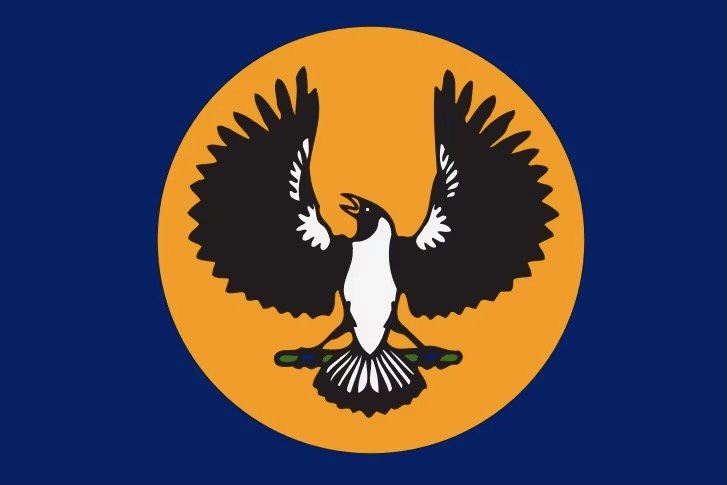by Carla Caruso
You might’ve noticed the signs throughout Adelaide and your Park Lands recently.
While the Australian magpie is well-known for swooping during breeding season, the magpie is not the only black-and-white bird with a similar notorious habit.
So much so that the City of Adelaide has installed signs around the CBD and Park Lands about the dangers of swooping magpie-larks.
Pic: Spence Denny / ABC Radio Adelaide. These signs can be moved to wherever such bird problems have been reported.
The magpie-lark (Grallina cyanoleuca) has the same colouring as a magpie but is smaller and has more white on its feathers, especially on the belly.
Compare: the Australian magpie (left) and a male magpie-lark (right). Pics: ‘Cygnusa’ and Michael Jeffries / iNaturalist.
Other common names for the magpie-lark include ‘mudlark’, ‘peewee’, ‘peewit’ and ‘Murray magpie’.
A female magpie-lark (Grallina cyanoleuca). Pic: thatmash / iNaturalist.
The birds are often mistakenly associated with the so-called piping shrike, or white-backed magpie – a South Australian emblem.
South Australia’s state emblem includes a so-called piping shrike, which is a stylised version of the white-backed Australian magpie - not a magpie-lark. Image: Wikimedia Commons.
A spokeswoman for the state government-run Green Adelaide said: “Magpie-larks can make their way into our more urban areas, especially where there is good access to both water plus grass for them to feed on insects.
“As the signage says, the thing to look out for from this species is that because they often feed from the ground, they have been known to then swoop ‘up’ toward people, rather than what we usually think of swooping, as happening from above.
Left: a male magpie-lark in Blue Gum Park / Kurangga (Park 20). Pic: nevwright iNaturalist. Right: a female magpie lark in G.S. Kingston Park / Wirrarnnthi (Park 23). Pic: lad46 / iNaturalist.
“They’re more likely to be swooping during their breeding season, from August to February, but because these birds can be territorial, they may swoop at other times of the year as a way to protect their patch.
“It isn’t a ‘new’ behaviour, but it may be that people are noticing this behaviour more if our drier than usual start to winter [during June/early July] has caused these birds to venture out of their territories in search of food and water.”
Magpie-larks are also known to dive at their own reflection in windows or reflective surfaces, particularly car side mirrors, trying to protect their territory.
Sarah McDonald on iNaturalist spotted a family of magpie-larks inside the Bicentennial Conservatory at the Adelaide Botanic Garden (Park 11). “Definitely wild, not and never were captive.”
Image: Darling Range Wildlife Shelter WA.
As one commenter on a Reddit thread wrote a few months ago: “I once had a magpie-lark couple build a nest outside my office window in a tree. The male spent every afternoon attacking his reflection in the glass of my window.”
For many, though, the birds are just cute additions to their local park or backyard.
Want to know some easy ways to identify the gender of a magpie-lark?
The males appear to have ‘goggles’ and a black throat. The females, meanwhile, have ‘running mascara’ and a white throat.
Richie Webb snapped these magpie-larks using light towers on the Linear pathway in Tarntanya Wama (Park 26) as nesting spots.
They’re not hard to spot! Pic: annalanigan / iNaturalist.
See the other birds featured in our What Bird Is That? series here: https://www.adelaide-parklands.asn.au/what-bird-is-that.
Main photo, top, by Chris Gascoigne at the Adelaide Botanic Garden (Park 11).
See other features of your Park Lands on our page, What’s in Your Park Lands, comprising:












